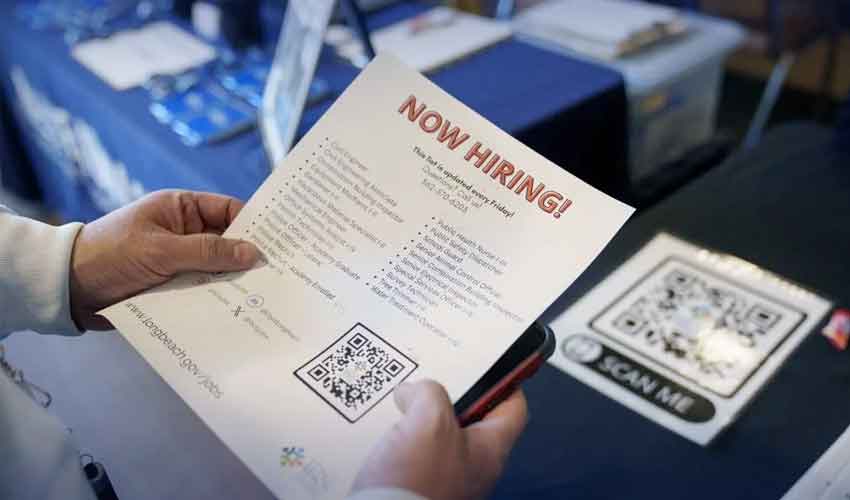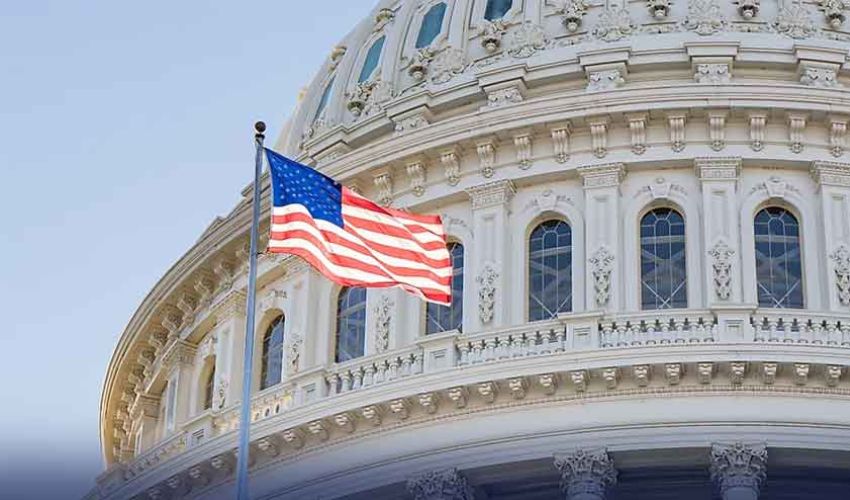The number of Americans filing new applications for unemployment benefits dropped to a four-month low last week, pointing to solid job growth in September and offering confirmation that the economy continued to expand in the third quarter.
The weekly jobless claims report from the Labour Department on Thursday, the most timely data on the economy's health, also showed jobless rolls shrunk to levels last seen in early June.
The U.S. central bank on Wednesday cut interest rates by 50 basis points to the 4.75%-5.00% range, the first reduction in borrowing costs since 2020, which Federal Reserve Chair Jerome Powell said was meant to demonstrate policymakers' commitment to sustaining a low unemployment rate.
"These hard numbers confirm the message delivered by Fed Chair Powell yesterday," said Carl Weinberg, chief economist at High Frequency Economics.
"The labour market is softening, but not imploding as you would expect in a recession. Fed policy is aimed at supporting the job market before a recession shapes up."
Initial claims for state unemployment benefits dropped 12,000 to a seasonally adjusted 219,000 for the week ended Sept. 14, the lowest level since the middle of May, the Labour Department said on Thursday. Economists polled by Reuters had forecast 230,000 claims for the latest week.
Unadjusted claims increased by 6,436 to 184,845 last week, amid notable rises in California, Texas and New York, which more than offset a decrease of 2,055 in Massachusetts.
The labour market has cooled considerably, with a big step-down in hiring and a decrease in job openings, which has raised concerns of a deterioration in conditions that could undermine the economic expansion. Layoffs, however, remain low, which is helping to prop up the economy, through solid consumer spending.
Economic growth estimates for the third quarter are around a 3.0% annualized rate. The economy grew at a 3.0% pace in the second quarter, above the 1.8% rate that officials at the Fed see as its longer-run, non-inflationary potential.
The central bank raised its benchmark overnight interest rate by 525 basis points in 2022 and 2023.
Claims have been little changed since dropping from an 11-month high of 250,000 in late July, which economists mostly blamed on temporary plant shutdowns in the automobile industry.
They have largely followed last year's pattern, which economists said suggested seasonal adjustment issues were behind that rise.
"This is the key point about why these numbers are good, so without more substantial labour market weakness, we could see more low readings on claims in the months ahead," said Abiel Reinhart, an economist at J.P. Morgan.
Temporary furloughs at Boeing could boost claims in the coming weeks.
The aerospace company said on Wednesday it would temporarily furlough tens of thousands of employees, including "a large number of U.S.-based executives, managers and employees," after about 30,000 machinists went on strike last Friday, halting production of its best-selling 737 MAX and other airplanes.
"The furloughs ... probably would (impact claims) by the week ending Sept. 28," said Reinhart. "Also, the labor strike could slow work at Boeing suppliers, which may lead to additional claimants."
Stocks on Wall Street were trading higher. The dollar gained versus a basket of currencies. U.S. Treasury yields rose.
Payrolls survey week
The claims data covered the week during which the government surveyed business establishments for the nonfarm payrolls component of September's employment report. Claims fell considerably between the August and September survey weeks.
Nonfarm payrolls increased by 142,000 jobs in August, below the average monthly gain of 202,000 over the past 12 months.
The number of people receiving benefits after an initial week of aid, a proxy for hiring, fell 14,000 to a seasonally adjusted 1.829 million during the week ending Sept. 7, the lowest level since early June, the claims report showed.
The so-called continuing claims have declined from more than 2-1/2-year highs in July.
That jump was mostly attributed to policy changes in Minnesota that allowed non-teaching staff in the state to file for unemployment benefits during the summer school holidays. Continuing claims data next week could offer more clues on the health of the labor market in September.
While the labor market is holding up, the housing market is struggling to regain its footing as persistently high home prices despite improving supply keep potential buyers on the sidelines.
A separate report from the National Association of Realtors showed existing home sales fell 2.5% in August to a seasonally adjusted annual rate of 3.86 million units, the lowest in 10 months. The median existing home price increased 3.1% from a year earlier to $416,700, the highest on record for any August.
Declining mortgage rates, which have retreated to 1-1/2-year lows, could entice more homeowners to put their homes on the market. Most home owners have mortgage rates below 4% and the so-called "rate lock" starved the market for previously owned homes of supply. Lower borrowing costs could, however, stimulate demand that outpaces supply, keeping house prices elevated.
Powell told reporters on Wednesday that "the real issue with housing is that we have had and are on track to continue to have not enough housing," adding "this is not something that the Fed can really fix, but I think as we normalize rates, you will see the housing market normalize."
Housing inventory increased 0.7% to 1.35 million units last month. Supply jumped 22.7% from one year ago.
"With mortgage rates closing in on 6% and likely to fall further in response to an aggressive pace of Fed rate cuts, we think more sellers will come off the sidelines," said Nancy Vanden Houten, lead U.S. economist at Oxford Economics.
"Increases in inventory will temper future gains in home prices but we anticipate any downside to prices will be offset by increases in demand fueled by lower interest rates."

























